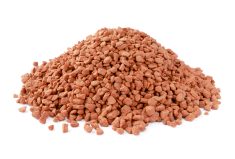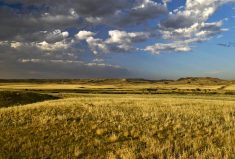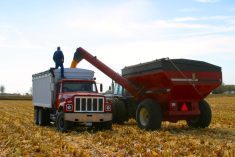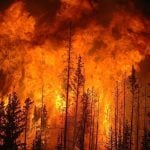Wetlands in Western Canada may emit significantly less methane than previously thought, according to recent research from Ducks Unlimited Canada.
“There was always this notion that Prairie wetlands might be emitting a bunch of methane in the spring as they thaw,” said project lead Pascal Badiou, one of the scientists working for DUC’s research arm, the Institute for Wetland and Waterfowl Research.
Why it matters: The accuracy of emissions measurements can affect government funding for sustainable agriculture.
Read Also

Ag Days Gives Back 2026 focuses on fire response
Manitoba Ag Days charitable program, Ag Days Gives Back, returns for 2026 with a new wave of rural community support in Manitoba and southeast Saskatchewan
That old idea was in line with what scientists thought they knew about the relationship between greenhouse gases and wetlands. Wetlands contain bacteria that emit methane and, logically, those bacteria should become more active come spring, releasing a pulse of the gas.
There was limited western Canadian data to back the idea, however. Badiou said emissions in cold-weather temperate wetlands, which can remain frozen for five months of the year, had not been extensively studied. The existing body of work measured emissions from isolated patches of wetland roughly 20 centimetres in diameter.
“Those chambers serve as a very sterile, non-biological way to look at greenhouse gas fluxes, and there are lots of issues with that,” said Badiou.
For one thing, that methodology makes it a challenge to get a representative sample.
It takes a lot of work to collect enough samples to track changing greenhouse gas emissions over the course of the day, so samples would only be collected in the middle of the day, when emissions would be greatest.
More significantly, Badiou noted, samples can’t be obtained in early spring when the land is thawing — the very time when the methane surge was assumed to take place.

New methods and surprising results
DUC’s research took a different tack. The organization deployed high-tech flux towers in wetlands across Canada, the most recent of which was erected in July at central Manitoba’s Oak Hammock Marsh.
Two western Manitoba sites are also part of the network, with one installed near Newdale and another between Strathclair and Shoal Lake.
Each tower records changes in greenhouse gas concentrations (the fluxes) of the wetland where they are installed. Concentrations are measured at a rate of 20 to 40 times a second, according to Badiou.
The towers are then paired with an anemometer, a device that gives a three-dimensional reading of wind velocity and movement. The combined result is called a flux footprint.
“Instead of isolating just a small section of wetland to take these measurements, we’re actually getting flux measurements from the wetland as a whole, and that has helped us generate much better estimates of fluxes,” says Badiou.
As the data flowed in, scientists noticed something about that commonly held idea of a spring methane pulse: it never materialized.
“We have not seen any detectable spring pulse of methane,” said Badiou. “The amount of methane coming off these systems is lower than what we see in most published literature for these types of freshwater wetlands in temperate regions.”
National scope
The flux tower project is part of a larger national study co-led by Ducks Unlimited Canada and Irina Creed at the University of Toronto’s Scarborough campus. The hope is to get better data on wetland greenhouse gas emissions across Canada’s different regional conditions.
“Part of our work has been to look at differences with respect to greenhouse gas emissions for wetlands embedded in perennial landscapes relative to wetlands that are embedded in conventional cropland,” said Badiou.
The emerging data has shown significant differences in water quality between those two types of wetlands, and that has significant implications for greenhouse gas emissions, the researcher noted.
“When you have wetlands embedded in perennial systems that are used in livestock operations, typically you have lower nutrients and higher sulphate levels,” said Badiou.
Sulphates inhibit methane production, as do lower nutrient levels.
“What it’s showing is that having intact landscapes around wetlands that are maintained through grazing systems is beneficial in terms of minimizing greenhouse gas emissions and likely increasing carbon sequestration,” said Badiou.
The national project is funded by the Beef Cattle Research Council, Natural Sciences and Engineering Research Council of Canada Alliance, the Canadian Agriculture Partnership and Ducks Unlimited Canada and is being run in co-operation with the University of British Columbia and the Manitoba Forage & Grassland Association.
















